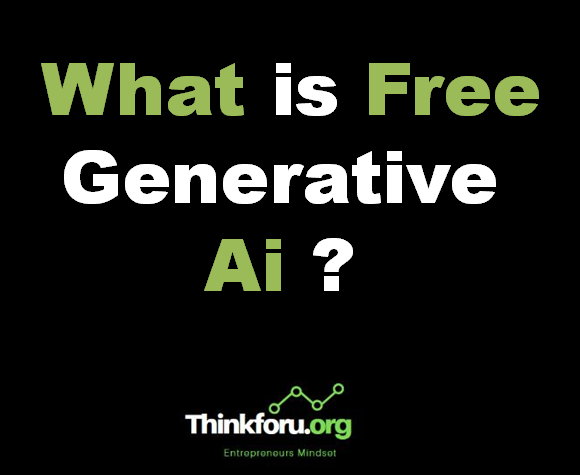What is Free Generative AI ?
What is Free Generative AI?
"Free generative AI" typically refers to artificial intelligence systems or models that are available for use without requiring payment. Generative AI refers to a class of AI models that can generate new content, such as text, images, or even music, based on the patterns and information they have learned from training data.
Here are some examples of free generative AI tools:
Text generation:
ChatGPT: This popular chatbot can hold conversations, generate creative text formats like poems, code, scripts, musical pieces, email, letters, etc. It offers a free tier with limited features.
QuillBot: This AI rewrites text in different ways while maintaining the original meaning. It's great for paraphrasing, summarizing, and improving grammar.
Perplexity.ai: Ask questions and get direct, informative answers with citations. There's a free tier with limited queries.
YouChat: Engage in ChatGPT-style conversations and ask follow-up questions. It's completely free.
Image generation:
Canva AI Image Generator: This free tool in Canva lets you create images based on text prompts. You get limited free uses, with more available in paid plans.
NightCafe Creator: Create artwork in various styles using text prompts. It offers a free tier with limited monthly creations.
Dream by WOMBO: This mobile app lets you create unique, AI-generated art based on your text descriptions.
Other generative AI tools:
Fireflies.ai: This AI tool automatically transcribes and summarizes your virtual meetings for free.
Stable Diffusion Online: This free platform lets you generate creative images from text descriptions.
Related to free generative AI:
1. Open Source Models: Some generative AI models are released as open-source projects, allowing anyone to access, use, and even contribute to the development of the model. This fosters collaboration and innovation within the AI community.
2. Community-driven Development: Free generative AI often benefits from community contributions. Developers from around the world may contribute improvements, optimizations, or additional features to enhance the capabilities of the model.
3. Research and Education: Free generative AI models can be valuable tools for researchers, students, and educators. They provide opportunities to explore the capabilities of AI, conduct experiments, and gain insights into various applications without the barrier of cost.
4. Application in Various Fields: Generative AI has found applications in diverse fields, such as natural language processing, computer vision, art generation, and more. Free access to these models enables a broader range of individuals and organizations to leverage AI in their projects.
5. Ethical Considerations: As with any AI technology, ethical considerations are crucial. Users of generative AI should be aware of potential biases in the training data, understand the ethical implications of AI-generated content, and use these tools responsibly.
6. Limitations: While free generative AI models can be powerful, they also have limitations. Understanding the strengths and weaknesses of a particular model is important for users to make informed decisions about its suitability for a given task.
7. Availability of Pre-trained Models: Many free generative AI models come pre-trained on large datasets, allowing users to quickly benefit from the model's capabilities without the need for extensive training on their own datasets.
It's essential to stay updated on the latest developments in the field of generative AI, as new models and improvements are regularly introduced by researchers and organizations. Always refer to the documentation and guidelines provided by the model's creators for accurate and up-to-date information.
While these tools are free to use, they often have limitations, such as usage quotas, output quality, or limited features in their free versions. If you need more advanced features or higher usage limits, you might need to consider paid plans.
More Related to Generative AI
What is Generative AI Google
What is Generative AI vs Discriminative AI
